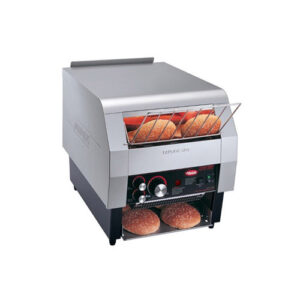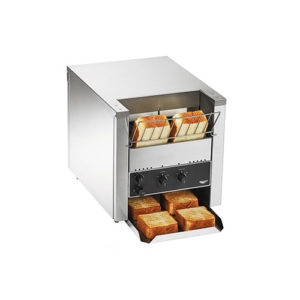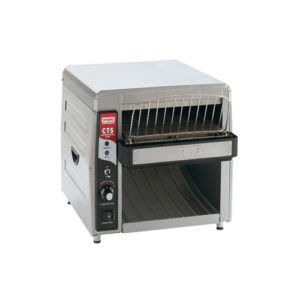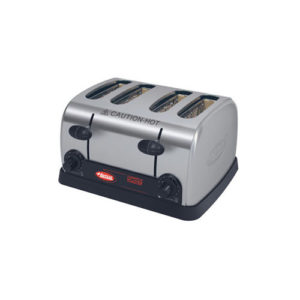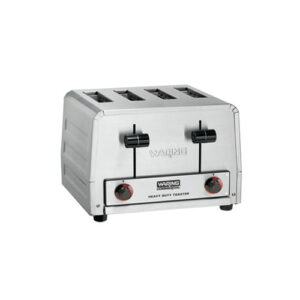25 Jun, 2025
Buying Guide | Toasters
Commercial toasters are an ideal complement to kitchens with fast–paced food service. These toasters, suitable for cooking bread, bagels and English muffins, are very dependable and are comprised of durable components, which will make it consistent and reliable in comparison to a home toaster. The main two types of commercial toasters are pop-up toasters and conveyor toasters. Pop–up toasters are ideal for light to medium amounts of food being toasted.Conversely, conveyor toasters will be made for constant high service demand and are available . Your decision will depend on available space, volume of food requirements, types of breads used and kitchen power availability. Commercial toasters will be fast, reliable and resistant to heavy use, making them a very useful appliance in any foodservice operation.
What Are Toasters Used For?
Commercial toasters are multifaceted instruments that are developed for speed and evenness through consistent results, making it an ideal appliance for the demands of a busy foodservice facility.
Breakfast
Commercial toasters shine during breakfast rush – you can toast bread, bagels, English muffins – whatever you want to golden perfection. The outside of the bread toasts evenly and the insides remain soft, which is essential for cafes and breakfast locations that serve toast, sandwiches, and breakfast pastries.
Lunch
During lunch, you can use a commercial toaster for sandwich breads and flatbreads – and you can count on having even toasting with a consistent texture and warmth. Conveyor toasters really serve their purpose during lunch, especially when they toast hundreds of sandwiches. If you toast the right way, it‘s as easy to warm up bread for your salads and burgers in a busy kitchen setting
Dinner
Commercial toasters are still in demand during dinner service and produce fast and consistent warming for bread used in sandwiches, sides, or appetizers. Time is of the essence and that‘s what you want at service to flow in order for guests to get that perfectly toasted item – and always by the speed of the commercial toaster.
How Does A Toaster Work ?
Commercial toasters are focused on efficiency and consistency. They have robust electric heating elements that quickly toast bread quickly and evenly on both sides. Pop-up toasters toast bread between two glowing heating elements and pop the nicely browned toast up. Conveyor toasters take it up a notch and quickly slide bread through a heated tunnel on a conveyor belt. The speed and consistent toasting is perfect for a busy kitchen. You control the doneness level with the adjustable settings so you can toast it lightly or darkly brown every time. Simple, effective and built to handle the rush, commercial toasters deliver on their promise and make sure every slice comes out perfectly.
What You Need To Know!
An efficient commercial toaster can enhance your kitchen‘s productivity, produce reliable results, and manage high volumes. However, choosing the wrong toaster can affect service speed or cost you money in repairs. Below is a short checklist to help you choose the right unit.
Size/Space
Commercial toasters come as small as pop-up models, and as large as conveyor models. Make sure you select a toaster that fits your counter space and your typical daily volume. Conveyor commercial toasters are ideal for kitchens that have high-volume demands, while pop-up toasters fit smaller operations.
Power Supply
Most of the commercial toasters work on electric current, which is why you need to ensure that your electrical system is able to withstand the voltage and power levels needed by the toaster for smooth running during busy times.
Controls
Most commercial toasters come with manual dials that are used to adjust heat and toasting time as needed. These very simple controls make it convenient to adjust on the fly, which can be useful for chefs in busy kitchens since fast and flexibility is often needed.
Ventilation
Toasters produce both heat and crumbs, so allowing for adequate ventilation and clearance around your toaster is advisable. Also, you will need to clean crumb trays and remove filters to prevent fire hazards and to make sure your toaster will have performance for many years.
Which Deck Oven Is Best?
Although many commercial toasters appear similar in style, type, performance will vary. The best toaster for your needs is the toaster that meets your kitchen needs. For example, a small café or coffee shop may only require a pop-up toaster for low-volume quick toasting, while a hotel breakfast area, fast-casual restaurant or high–volume operation may be better served with a conveyor toaster designed for high-speed continuous service. If your menu includes different types of breads for example bagels, thick slices of artisan bread or English muffins, using a toaster with adjustable slot widths or conveyor type toasting will facilitate different widths easily.
Cleaning
Most commercial toasters are designed for easy and ongoing maintenance. Standard cleaning practices include emptying and wiping down crumb trays, brushing elements of any debris and making sure the casing is clean. Daily routine maintenance is key to safety and performance over time
Placement
Select a style of toaster that fills your workspace needs. Pop-up toasters will fit better onto narrow countertops, while conveyor toasters will require some working space to feed the product and discharge onto a platter. Some toasters may even have stands available as an option, or a minute degree of working space needed on selected sides to allow for ventilation or access, check the installation requirements and specs before purchase.
Things to Consider:
Price
Pop-up toasters are generally less expensive and more suitable for lower-volume requirements; alternatively, conveyor toasters have a higher initial cost but are capable of high speed and intensive use, making them a more useful tool in high-volume kitchens.
Efficiency
Conveyor toasters have the capacity to produce hundreds of slices/hour and offer greater speed and heat controls, allowing for efficient use during busy service periods. Pop-up toasters are more suited to smaller batches and simpler operations, with the potential of slowing down your operation during peak service times.
Cost of Utility
Most commercial toasters are electric, so it is worth asking about the energy usage of the models you are considering. If you are utilizing toasters regularly throughout the day, an energy–efficient unit can save you money.
Availability
Some toaster types (such as high-speed or specialized conveyor toasters) may have longer lead times or limited availability, depending on your geographical region. Be sure to check with suppliers in your area for stock and service and parts support.
Common Commercial Toasters
|
|
|
|
|
|
|

